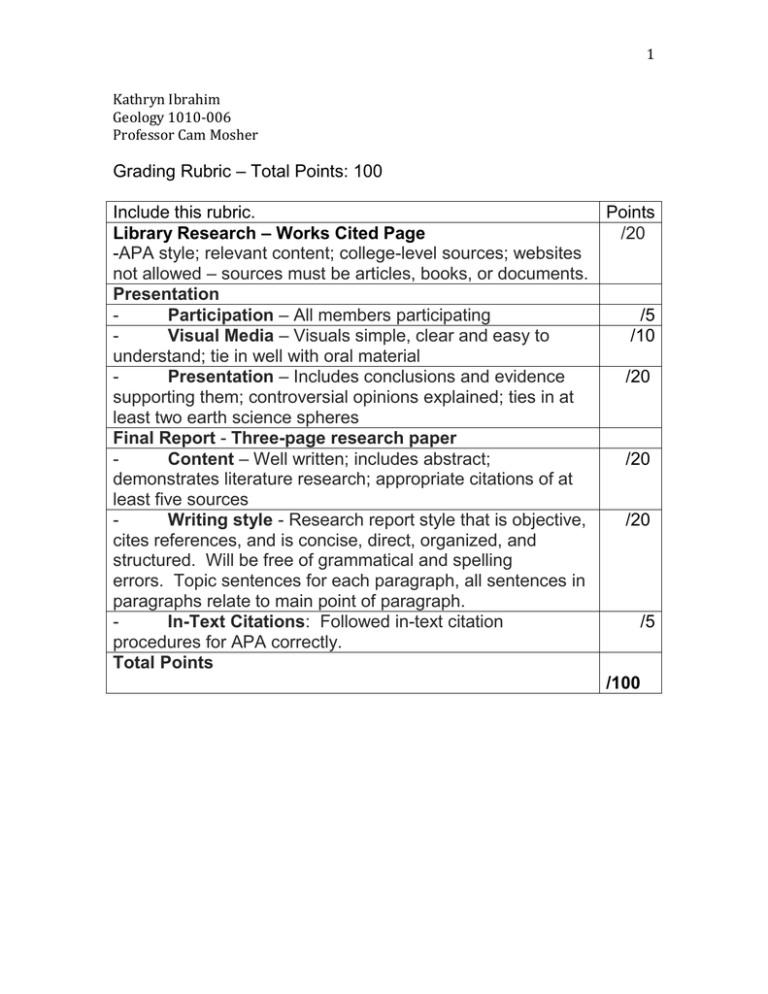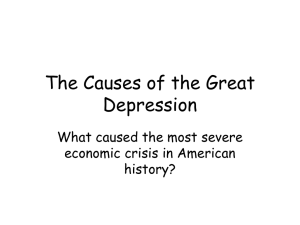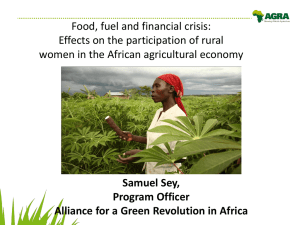Geology 1010 Research Paper
advertisement

1 Kathryn Ibrahim Geology 1010-006 Professor Cam Mosher Grading Rubric – Total Points: 100 Include this rubric. Library Research – Works Cited Page -APA style; relevant content; college-level sources; websites not allowed – sources must be articles, books, or documents. Presentation Participation – All members participating Visual Media – Visuals simple, clear and easy to understand; tie in well with oral material Presentation – Includes conclusions and evidence supporting them; controversial opinions explained; ties in at least two earth science spheres Final Report - Three-page research paper Content – Well written; includes abstract; demonstrates literature research; appropriate citations of at least five sources Writing style - Research report style that is objective, cites references, and is concise, direct, organized, and structured. Will be free of grammatical and spelling errors. Topic sentences for each paragraph, all sentences in paragraphs relate to main point of paragraph. In-Text Citations: Followed in-text citation procedures for APA correctly. Total Points Points /20 /5 /10 /20 /20 /20 /5 /100 2 CALIFORNIA’S DROUGHT: CAUSES AND EFFECTS KATHRYN IBRAHIM GEOLOGY 1010-006 APRIL 30, 2015 3 California’s Drought Five percent of average, that was the devastating measurement that was taken of the Sierra Nevada’s snowpack by the California Department of Water Resources on April 1, 2015. The level is the lowest on record. Sierra Nevada’s snowpack is crucial to feed the streams and reservoirs through runoff. This runoff is crucial to California’s cities and farms. In fact, it accounts for one-third of their water use. Yet, last year California recorded it’s driest year in 119 years, and it was also the warmest on record. A drought as severe as the one California is witnessing, has serious impacts on the hydrosphere, the atmosphere, the biosphere, the geosphere, and the homosphere. In this paper I will discuss the causes, and the effects, both short and long-term, and some possible solutions to this disaster. Causes: Most scientists agree that a region in the Pacific Ocean is experiencing persistent high atmospheric pressure. This pressure has been diverting storms away from California, as well as parts of Oregon and Washington, and disrupts normal wind patterns. This blocking ridge has been termed the “ridiculously resilient ridge”, or “Triple R”, by Stanford climate scientist Noah Diffenbaugh and graduate student Daniel Swain; they teamed up with Bala Rajartnam a professor of statistics at the Stanford Woods Institute for the Environment, to find out what is causing this “Triple R” to persist. With the ability to create computer stimulations and using statistical techniques their research, which was published on September 29, 2014, showed that the high atmospheric pressure in the region—and the leading 4 cause of the drought—is three times more likely to happen with today’s emissions of greenhouse gases than during the conditions that existed pre-industrial revolution (Than). So we could blame Mother Nature and her unpredictable weather patterns, but according to this study, we are partly to blame for the rare weather pattern’s existence. So it’s Global Warming? You still find the naysayers the ones that say Global Warming either doesn’t exist, or isn’t impacting California’s drought. In fact, a report released by the NOAA, states that the main causes of California’s drought is a combination of persistent Pacific Ocean temperatures and the complete randomness of the atmosphere, or what they call “internal variability” (Holthaus). This statement created a firestorm of news articles claiming that California’s drought has not been caused by climate change and rather its just nature being nature. I am not here to argue the cause of the high atmospheric pressure, that has led to a significant decrease in rainfall; all I am here to state is that is what has caused it…global warming or no global warming. Current and Long-Term Effects: Perhaps the most visible effects of the drought are the lowered water levels in California’s lakes, reservoirs, streams, and bays. Many of the lakes and reservoirs are below 50 percent of their normal water levels. Lake Oroville, situated in northern California, is at just 32 percent of its capacity. Some water bodies are nearly dried up. For example, San Joaquin Valley’s Pine Flat Reservoir is only filled to a dismal 12 percent (Dattaro). The lowering levels of water are having a profound 5 effect on the state’s fish and wetland wildlife. There have been efforts to protect all species, including those that are in particular endangerment; but if worst comes to worst, water for human use will take precedence. Another effect of the drought is the decreased amount of water in wells. By some estimates the wells are going down one hundred feet every year. This has caused the state to drill further down to reach the water table, and that is a costly task. It now costs $300 per foot of drilling. The decrease in water availability has caused the Governor of California to impose an official mandate to reduce water usage by 25 percent. The lowering of the water table has also led to land subsidence, which is especially noticeable in the San Joaquin Valley. Land subsidence can lead to huge losses of property and infrastructure damage. Which is costly for the state to fix. Also, as the dams are drying up, the state’s hydroelectric plants are producing far less energy than usual. One article states that the hydroelectric plants have produced the lowest amount of electricity in 23 years, half of its normal output (Paulas). All this dry land makes California particularly vulnerable to wildfires. Whether man-caused, or nature-caused fires pose a whole list of problems for the residents of California. Besides the obvious risks that fires pose on people, fires can produce landslides, floods, as well as create poor water quality. After a fire burns the ground it leaves behind a waxy-type residue that is impenetrable. So when it rains, instead of the water seeping into the ground like normal, it just rolls over top of it. The fires weaken vegetation’s roots and make them susceptible to pull out and 6 create landslides. It also creates an opportunity for soil to get into the drinking water and contaminate it (Poppick). The drought has caused significant challenges to California’s $45 billion a year agricultural industry. With less water to grow produce and nuts vast amounts of land are being abandoned, leaving it susceptible to erosion (remember the dust bowl). One report states there have been an $810 million dollar crop revenue loss, a $203 million livestock and dairy revenue loss, and $454 million in additional pumping costs to keep water flowing to the farms. This has resulted in $1.5 billion in total direct losses to farmers, and this translates into a $2.2 billion dollar loss for California’s economy (Howitt). The rising costs of keeping a farm running have had a trickle-down effect on all of us. We will likely all see an increase in the price of produce and dairy that California supplies to all of us. Rising costs of running a farm and a decrease in land size that farmers have to work with has also cost many people their jobs. In fact, 17,100 people have lost agricultural jobs since the drought first started. This also affects us all, as we are likely to see an increase in people filing unemployment claims. Solutions: There isn’t much we can do about the Triple R ridge system sitting above California. What we need to be doing is to treat the available amounts of water as the new norm, even after the system has moved out and the drought subsides. Governor Brown has started”Cash for Grass” program, and is paying residents to remove the grass from their yards, and install drought tolerant landscape. Besides changing the landscaping of yards, people in California could drain the pools in their 7 backyards. Residents can remember the slogan, “Slow the flow save H20”, we all could be better at only running our dishwashers when they are completely full, turning off the sink while brushing our teeth, and just generally being conscious of our own water usage. The mentality that the amount of water we have is either consistent or that we will never run out it needs to change. People need to start treating water as the precious commodity it is, because we could run out, and that is a really scary thought. 8 The Enterprise Bridge passes over full water levels on July 20, 2011, in Oroville, California (Dattaro). The Enterprise Bridge on August 19, 2014, in Oroville, California. Lake Oroville is currently at 32 percent of its total capacity (Dattaro). 9 Works Cited California Drought. (n.d.). Retrieved April 27, 2015, from http://ca.water.usgs.gov/data/drought/index.html Dattaro, L. (2014, December 14). California Drought: Devastating Photos Show Lakes Drying Up. Retrieved April 27, 2015, from http://www.weather.com/science/news/devastating-photos-show-lakesdrying-20140825 Drought Impacts. (n.d.). Retrieved April 27, 2015, from http://ca.water.usgs.gov/data/drought/drought-impact.html Holthaus, E. (2014, December 9). Did Climate Change "Cause" California's Drought? The Question Misses the Point. Retrieved April 27, 2015. Howitt, R., Medellín-Azuara, J., MacEwan, D., Lund, J., & Sumner, D. (2014, July 23). Economic Analysis of the 2014 Drought for California Agriculture. Retrieved April 27, 2015, from https://watershed.ucdavis.edu/files/biblio/DroughtReport_23July2014_0.pd f Paulas, R. (2014, March 18). California's Drought Is Affecting Our Food Supply. Retrieved April 27, 2015. Poppick, L. (2014, December 30). California Droughts Could Have Dangerous Ripple Effects. Retrieved April 27, 2015. Schiavenza, M. (2015, March 21). The Economics of California's Drought. Retrieved April 27, 2015. 10 Than, K. (2014, September 30). Causes of California drought linked to climate change, Stanford scientists say. Retrieved April 27, 2015. Trueman, K. (2014, March 5). California Drought: The Epic Disaster That Impacts Us All. Retrieved April 27, 2015.









